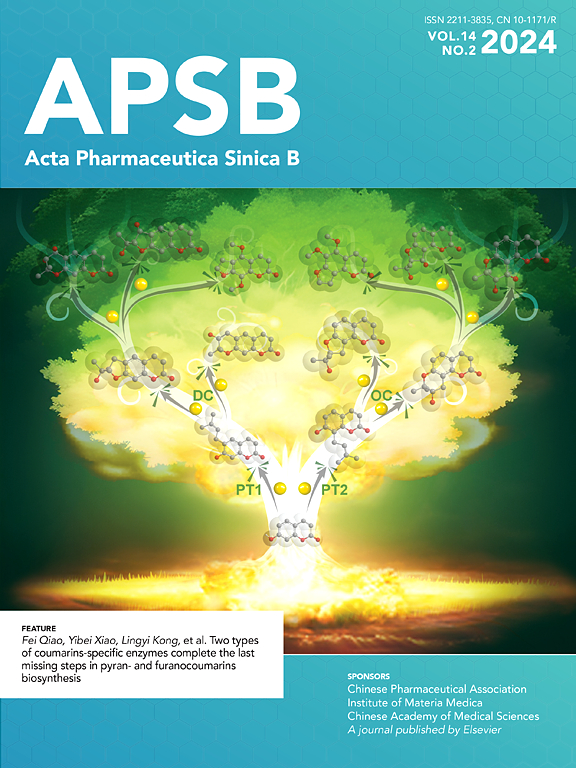Modulating inflammatory prostaglandin E2 signaling to mitigate neurobehavioral comorbidities associated with seizure disorders
IF 14.6
1区 医学
Q1 PHARMACOLOGY & PHARMACY
引用次数: 0
Abstract
Although epilepsy is first known as a disease of seizures and convulsions, most patients with epilepsy also suffer from seizure-associated behavioral abnormalities in motor functions, psychiatric status, and cognition. These neurobehavioral comorbidities may have greater impacts on the quality of life of people with epilepsy than the seizures themselves and can profoundly interfere with the treatment compliance. While repeated seizures often lead to behavioral comorbidities, certain types of comorbid conditions may potentially increase the risk for epileptic seizures, indicative of some common mechanisms that might underlie these two conditions. As such, emerging evidence supports that inflammation within the brain might represent a key component of such a shared mechanism, given that neuroinflammation can be induced by seizures and various behavioral stressors, and in turn may exacerbate both conditions. Among inflammatory pathways that arise after prolonged seizures, PGE2 signaling via the EP2 receptor promotes cytokine induction, blood–brain barrier disruption, reactive gliosis, neuronal death, and eventually, contributes to behavioral dysfunctions. Pharmacological inhibition of EP2 by small-molecule drug-like antagonists affords broad therapeutic benefits including anti-inflammatory and neuroprotective effects in several rodent seizure models, leading to long-lasting alleviation of neurobehavioral comorbidities, particularly cognitive impairments. Targeting this key inflammatory prostaglandin receptor might provide an adjunctive strategy, along with the current anti-seizure medications, to mitigate cognitive dysfunctions associated with seizure disorders.

调节炎性前列腺素E2信号以减轻与癫痫相关的神经行为合并症
虽然癫痫最初被认为是一种癫痫发作和抽搐的疾病,但大多数癫痫患者在运动功能、精神状态和认知方面也存在与癫痫发作相关的行为异常。这些神经行为合并症可能比癫痫发作本身对癫痫患者的生活质量产生更大的影响,并可能严重干扰治疗的依从性。虽然反复发作通常会导致行为合并症,但某些类型的合并症可能会增加癫痫发作的风险,表明这两种情况可能存在一些共同的机制。因此,新出现的证据支持大脑内的炎症可能代表了这种共享机制的关键组成部分,因为神经炎症可以由癫痫发作和各种行为应激源引起,反过来又可能加剧这两种情况。在长时间癫痫发作后出现的炎症途径中,通过EP2受体的PGE2信号传导促进细胞因子诱导、血脑屏障破坏、反应性胶质瘤、神经元死亡,并最终导致行为功能障碍。小分子药物样拮抗剂对EP2的药理抑制在几种啮齿动物癫痫模型中具有广泛的治疗效果,包括抗炎和神经保护作用,导致神经行为合并症,特别是认知障碍的长期缓解。针对这种关键的炎性前列腺素受体可能提供一种辅助策略,以及目前的抗癫痫药物,以减轻与癫痫发作相关的认知功能障碍。
本文章由计算机程序翻译,如有差异,请以英文原文为准。
求助全文
约1分钟内获得全文
求助全文
来源期刊

Acta Pharmaceutica Sinica. B
Pharmacology, Toxicology and Pharmaceutics-General Pharmacology, Toxicology and Pharmaceutics
CiteScore
22.40
自引率
5.50%
发文量
1051
审稿时长
19 weeks
期刊介绍:
The Journal of the Institute of Materia Medica, Chinese Academy of Medical Sciences, and the Chinese Pharmaceutical Association oversees the peer review process for Acta Pharmaceutica Sinica. B (APSB).
Published monthly in English, APSB is dedicated to disseminating significant original research articles, rapid communications, and high-quality reviews that highlight recent advances across various pharmaceutical sciences domains. These encompass pharmacology, pharmaceutics, medicinal chemistry, natural products, pharmacognosy, pharmaceutical analysis, and pharmacokinetics.
A part of the Acta Pharmaceutica Sinica series, established in 1953 and indexed in prominent databases like Chemical Abstracts, Index Medicus, SciFinder Scholar, Biological Abstracts, International Pharmaceutical Abstracts, Cambridge Scientific Abstracts, and Current Bibliography on Science and Technology, APSB is sponsored by the Institute of Materia Medica, Chinese Academy of Medical Sciences, and the Chinese Pharmaceutical Association. Its production and hosting are facilitated by Elsevier B.V. This collaborative effort ensures APSB's commitment to delivering valuable contributions to the pharmaceutical sciences community.
 求助内容:
求助内容: 应助结果提醒方式:
应助结果提醒方式:


